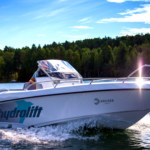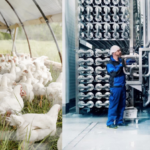Norway has been talking about innovation the last years, but so far I have not seen much action, says 500 Startups Partner, Sean Percival.
This week, on the 18th of January, is the launch of the 500 Startups pre-accelerator programme in Oslo, aimed to help early stage companies to raise a first seed round or ready themselves to join a full accelerator programme. InnoMag caught up with programme director Sean Percival, to ask him the most pressing questions about the program, and what it really takes for a startup to make it into the “big leagues”.
What is the criteria for investing in a startup and how can a startup make sure that they have all the information they need in order to be seriously evaluated as candidates?
First of all, we do not acquire a lot of information, mostly because there is not a lot of information available. The one thing we do require though is MVP, which stands for Minimum Viable product. Therefore, we will not invest in the idea stage. For example, an idea for an app is not good enough for us. They have to be able to show that they can build it. What we really want to see is traction. This is user’s revenue, whatever that might be. I love to see that you have a live patrician market – I don’t like things that are in beta, meaning it is closed or private. Norwegian companies do this a lot, and they are in beta for a long time. The concept of Beta in Silicon Valley is dead. It does not exist anymore. You launches quickly and then you elevate.
I like to see a live patrician market and some initial metrics. The best a founder can do is to say: We launched, we are growing this % every month. What I am trying to invest in is momentum.
At the assessment to choose the winner of Oslo Innovation Weeks 100 pitch, you listen to all the presentations in word, films and gadgets presenting the founders products. What was the main criteria that made you choose Skin Analytics over the 5 other finalists this year?
The one big thing he has is a big market. We like to see large market, because you only get a very small % of the market. Let us say that his marked is a 50 billion dollar market – then he can actually create a 1 billion dollar business out of that.
The other thing he had was a kick-starter, crowd founding and he raised a lot of money in one day. Those two shows me validation. He had initial validation in the form of crowd founding, he was tackling a large problem and he had a fair amount of progress. He had a prototype, he had the app, he had enough sort of initial orders. He is disrupting a very large industry. It is cheaper than going to the doctor.
Percival believes that many of the successful entrepreneurs in Norway are old and thus don´t necessary understand the concept of startups, thereby creating a lack of mentorship and startup leadership. However, one Norwegian entrepreneur he does find inspirational, is Johan Brandt in Kahoot.
I think Norway needs about 10 – 50 Johan’s and you only have one. People will look at him and wanting to be him. This works in the valley because we have hundreds of successful founders who are like him, hooked up with founders.
How do you assess or inspire people to get them to actually create and bring out their product?
Norway has been talking about innovation the last two – tree years, but so far I have not seen much action. But I can feel it changing.
2015 was about laying the foundation with Startup lab, Mash, startup Norway. 2016 is about action. It is the GSD year – Get Shit Done and make stuff happened. I am encouraging and aggressive to get founders to launce their products. With the accelerator program in Oslo starting 18. January, we are going to aggressively push the founders to get to market quicker.
As I mentioned, it is no reason to be in beta for a year. Launch the product tomorrow, even if it does not look very pretty. Norwegian has a tendency to make the product perfect before launching, but I can tell you that the first versions of Twitter, Google, Facebook and Myspace looked awful, but it grew and grew and they improved it over time. Let me explain this further by using the analogies of a rocket ship;
How to get a rocket ship of the ground?
It is very hard to get a rocket of the ground, it takes time, energy, and pressure, but once it is in the atmosphere, it is easy. But, getting off the ground is very difficult.
Getting of the ground and into the atmosphere – that is when they are on their own – they are raising money for bigger reasons.
Torill will be following the accelerator program second half of January for InnoMag, and share some of the interesting processes the chosen companies are going through.









